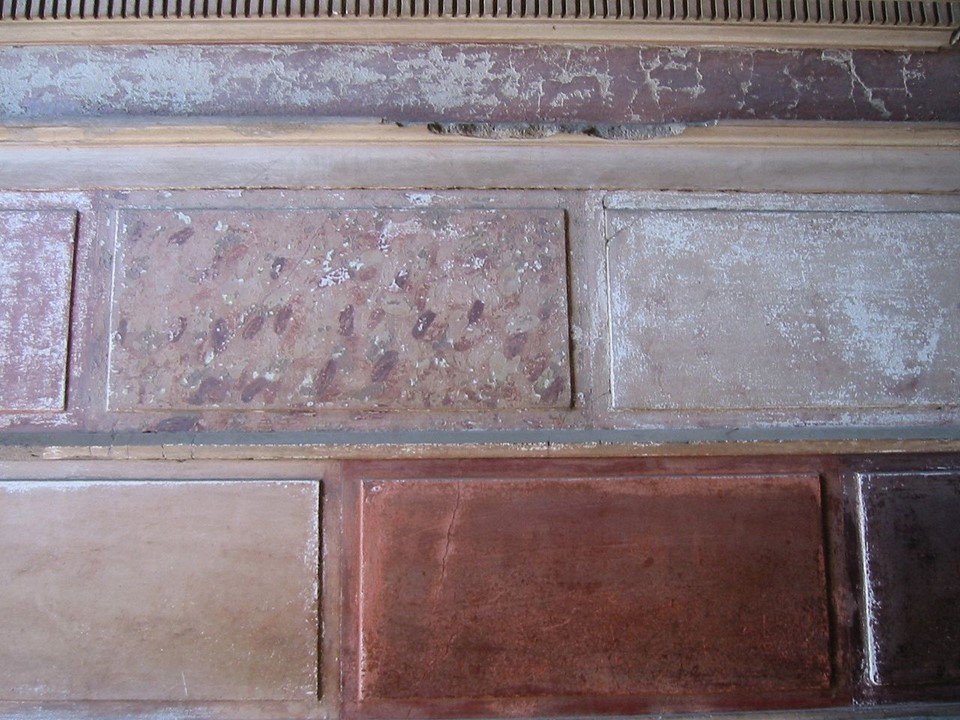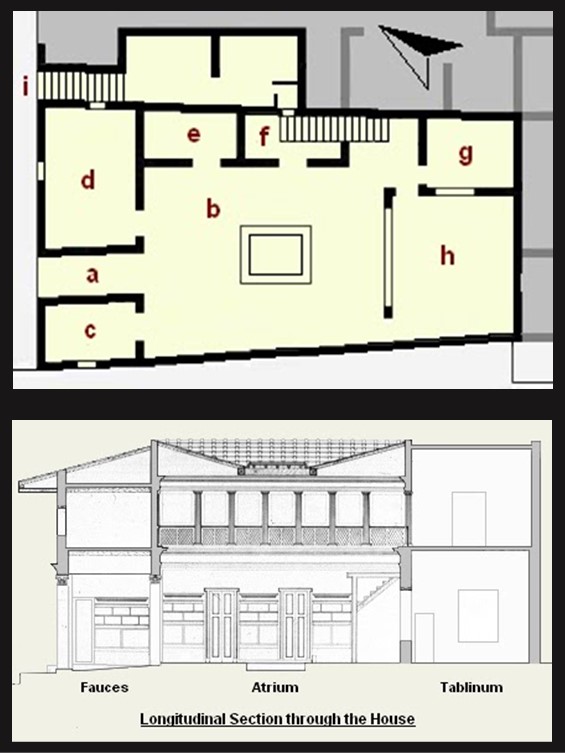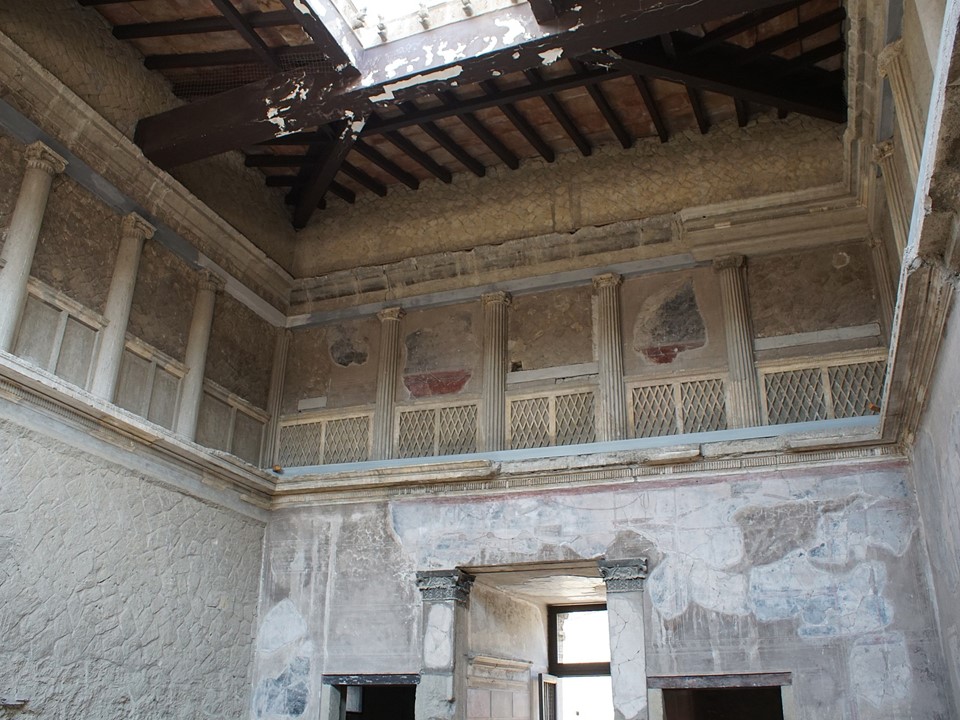
Herculaneum was a peaceful seaside town which was struck by a succession of pyroclastic flows during the eruption of Vesuvius in 79 CE. It was then covered with 25 metres of volcanic mud. Approximately one third of the town has been excavated. It is notable for the high standard of preservation of the houses and the public baths as well as perishable material such as wood, textiles and papyri. A significant number of high quality painted walls may be seen. The Roman seashore has been exposed during the excavations and a Roman boat has been preserved in a special museum. What a remarkable place to visit… and don’t forget, The Samnite House in Herculanium is a must! https://www.herculaneum.ox.ac.uk/links/visit
If you wonder why… Herculaneum has been preserved like no other site in the world, not even nearby Pompeii. Volcanic ash and mud saved two-story domus homes with the internal architecture and décor intact, including features in wood and marble, decorations, jewelry, and even organic remains like food, providing a unique view into the daily lives of the ancient population of Herculaneum. Among the finest and oldest houses that survived is the Samnite House we will attempt to explore. https://www.visitpompeiivesuvius.com/en/herculaneum
The Samnite House is one of the oldest private residences that has been discovered in Herculaneum, so far, and dates back to the 2nd century BC. It was originally much larger in size, with a three-sided Peristyle Court to the east, followed perhaps by a Hortus area. In the course of the 1st century AD, and for financial reasons, one could suspect, the property changed the plan. A second entrance door leading directly to the second floor was added and the entire upper floor space was rented out. The eastern section of the property, that is the Peristyle and possible Hortus was sold off, allowing a separate residential property, the House of the Great Portal, to be built. What survived of the original property, was a ground-floor house with a huge atrium and six small rooms arranged around it. The owners of the Samnite House… downsized, but part of the original decoration survived… it is unique and worth exploring! https://sites.google.com/site/ad79eruption/herculaneum-1/insula-v/samnite-house
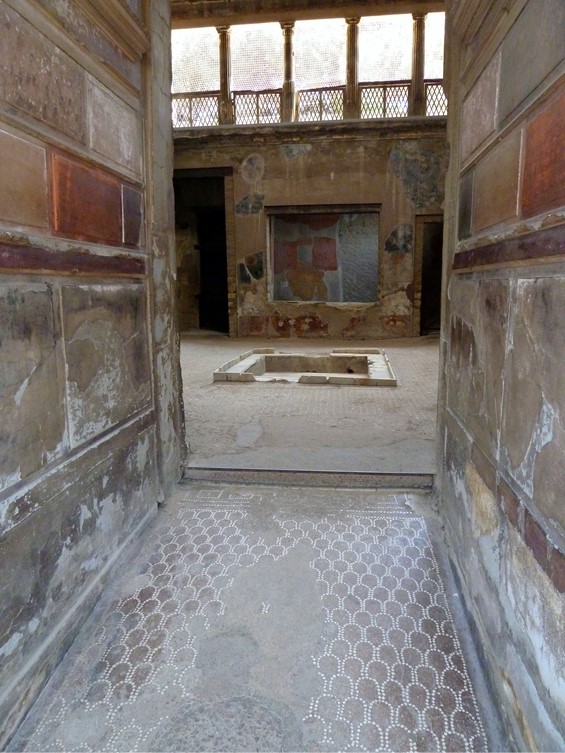
https://upload.wikimedia.org/wikipedia/commons/e/e8/Samnite_House_%287254091242%29.jpg
What I like best is the decoration of the original House Fauces, that is the entrance passageway leading to the Atrium. This small area is a “treasure trove” of distinctive examples of late 2nd century BC architectural features. For example, the House Entrance Portal and the Interior Portal leading to the Atrium, are flanked by impressive tufa columns with Corinthian capitals, intricately sculpted… The walls of the Fauces are decorated with rare frescoes in the 1st Pompeian Style, imitating, in vivid earth colours, polychrome marble… Finally, the Fauces floor, covered with a fine dark red and white mosaic in the Opus Signinum style, is simple, consisting of a scale-type pattern in white. https://sites.google.com/site/ad79eruption/herculaneum-1/insula-v/samnite-house
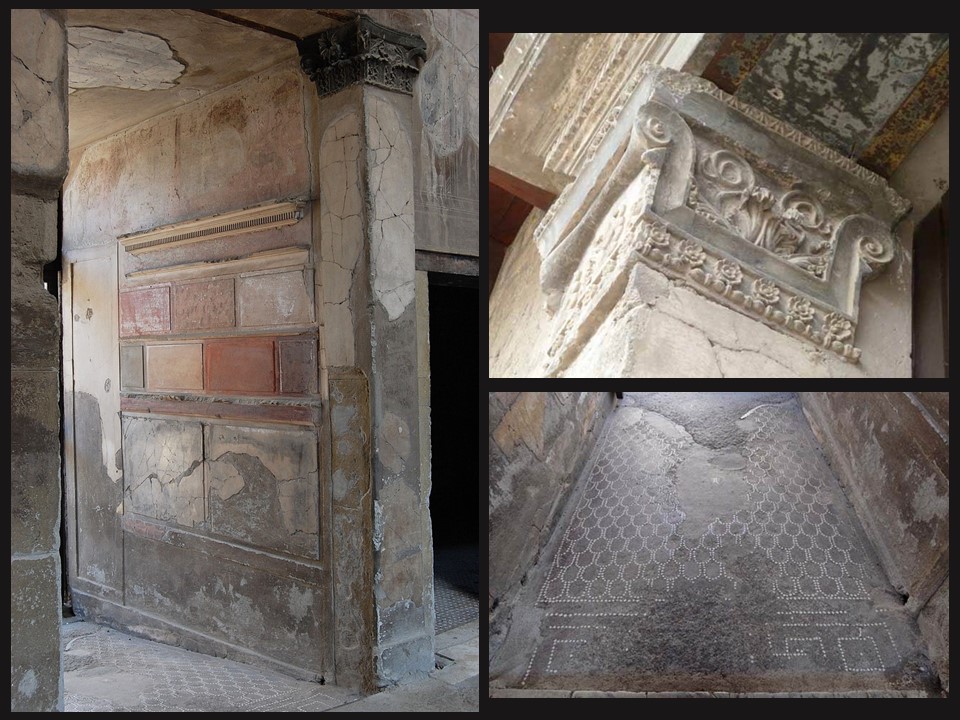
https://commons.wikimedia.org/wiki/Category:Irelli-Aoyagi-De_Caro-Pappalardo_416#/media/File:Ingresso_Casa_Sannitica.jpg
https://herculaneum.uk/Ins%205/Herculaneum%205%2001%20p1.htm
The Samnite House Atrium is impressive, to say the least! The largest area in the House, includes a central marble impluvium and a well-constructed floor in the Opus Signinum style, as well. The Atrium walls decoration, imitating a fancy two-storey structure, is the main attraction of the whole house! The lower part is decorated in frescoes of the 4th Pompeian Style, while the upper part, really fancy, features a false loggia with Ionic columns closed off with a stucco-lined latticework screen on three of its sides. I particularly like this false loggia decoration as it gives me the opportunity to compare it to another fresco, dated in the early 2nd century BC, coming from Pella, in Greece. https://herculaneum.uk/Ins%205/Herculaneum%205%2001%20p2.htm
For a Student Activity, please… Check HERE!
